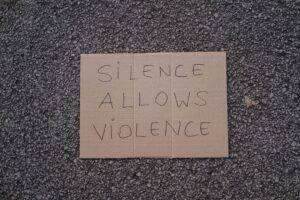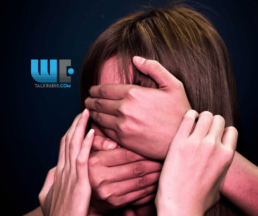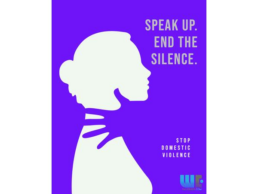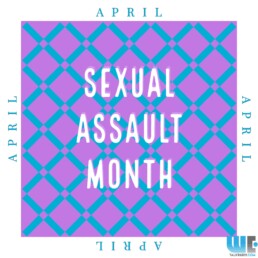Brand New Day with Emily Blue and DeAnn feat. Mothers Day Special
Brand New Day with Emily Blue and DeAnn feat. Mothers Day Special
Shine Lord Radio Show feat. Pastor Jeremy Glenn with the Power of Faith part 2
Shine Lord Radio Show feat. Pastor Jeremy Glenn - The Power of Faith part 2- special message from Sunday 4/18/21.
Shine Lord Radio Show feat. Pastor Jeremy Glenn with the Power of Faith part 2
Shine Lord Radio Show feat. Pastor Jeremy Glenn - The Power of Faith part 2- special message from Sunday 4/18/21.
Rape Culture Widespreading In India
Rape Culture in India
In the last over a decade, India has acquired a new title – the rape capital of the world. According to a report by the National Crime Records Bureau (NCRB), over 4 lakh reported cases of crimes committed against women in 2019, up from 3.78 lakh in 2018 and 3.59 lakh cases in 2017. NCRB reported 32,033 rape cases which translate to a shocking 88 rape cases a day -- and this is just 10% of all crimes against women. Experts say that picture could be far worse as most such crimes go unreported in the country, and the conviction rate is below 30%.
Several gang rape cases caused widespread outrage across the nation and highlighted the fact that how pervasive sexual violence is in the country. The cases that shook up the entire nation – Unnav rape case, 19-year-old lower caste woman was gang-raped by four upper-caste men, Kathua rape case (2018), Hyderabad rape and murder case to name a few. In 2012, the heinous and ghastly Delhi Nirbhaya rape case exposed the grim reality of bestial crimes against women in India. In this case, a 23-year student was raped and brutally murdered. The barbaric nature of the crime appalled the country and brought worldwide attention to the rape crisis of India. The government sought to appease the widespread street protests in many cities and lawmakers were forced to refer this case to a fast-track court, and the judgment was pronounced in less than a year. The law concerning violence against women was amended by the Parliament. The maximum punishment for rape resulting in death (or vegetative state) of the victim was modified from life imprisonment to include the death penalty. Other laws related to sexual crime were made stricter, in the hope that this would deter people from committing such crimes.
This case caught international headlines, and the convicts, after a supposedly historic judgment, were executed after 10 years. Right after two weeks of this judgment, a 23-year-old girl from North India was assaulted and doused in gasoline before setting her on fire. In the wake of such cases, India made the law to hand out the death penalty to the convicts of sexually assaulting a child under 12 years of age. Unfortunately, these laws do not seem to create fear for the abusers and rapists, and the number of these ghastly crimes against women is only increasing.
Who is responsible?
Culturally, Indian society is a patriarchal society where women are considered as secondary citizens. Children internalize this “value” from a very young age. The birth of a boy in a family is a highly celebrated occasion while on the birth of a girl child, the mother is often subjected to abuse. The demands and desires of a boy are considered superior to that of a girl child. These values are programmed in the Indian mindset. Sex-selective abortion, infanticide, and discrimination continue through adolescent and adult life with high levels of female infant mortality, child marriage, teenage pregnancy, lesser wages for women, unsafe workplaces, domestic violence, maternal mortality, sexual assault, and neglect of elderly women… the list just goes on that highlight the patriarchal nature of Indian society. Marital rapes are very common too but hardly reported to protect the family honor.
Indian society highly stigmatizes the victims of sexual assault or rape and victim shaming is very common. What she was wearing, what time she was traveling alone, were her gesture suggestive, or maybe she was smoking or drinking to give wrong signals to offenders, and the list goes on.
For men, it starts with “men will be men”. A minister from the government even suggested women give in while being raped so the rapists do not commit a heinous crime after the act or murder the victim. A judge even stepped ahead and said that because a smaller number of marriages taking place due to coronavirus lockdown, it is natural for men to rape in a bid of fulfilling their sexual desires.
These highly offensive remarks again highlight the deep-rooted social prejudice against women and emphasize how Indian society objectifies women, and how men are just born superior to women.
The increasing socioeconomic divide
India today is one of the fastest developing economies in the world. But benefits of the accelerating economic growth and the westernization of culture due to globalization are not reaching all social and economic classes equally. The upper-middle-class and rich class are the biggest beneficiaries of globalization and have accelerated the adoption of western-style dressing. This socio-economic and cultural divide is going broader by the day and manifesting in terms of the increase in the crime rate. In many rape cases, the convicts confessed their intention of teaching the woman a lesson for hurting the so-called Indian culture by wearing pants or staying out till late. Ironically, men are never punished for wearing western attire or not acting exactly what the culture teaches.
Caste dynamics permeate every aspect of Indian society. Cast-based rivalries, and sometimes religion-based ones become prime motivational reasons for sexual violence. Sexual violence against marginalized groups including tribal people and lower caste (who form the bottom of social hierarchy) is very pervasive.
Here rape becomes the show of power and an exercise to show the lower-class people their place and vulnerabilities.
The awakening of hope
After the widespread outrage against the sexual crimes, protests by thousands of people across the country demanding justice have pushed for strong penalties in the long-running court proceedings. More cases are being reported the government is being called on to address the broad pandemic of sexual crimes against women.
Shine Lord Radio Show feat. Pastor Jeremy Glenn with the Power of Faith
Shine Lord Radio Show feat. Pastor Jeremy Glenn with the Power of Faith
Shine Lord Radio Show feat. Pastor Jeremy Glenn with the Power of Faith
Shine Lord Radio Show feat. Pastor Jeremy Glenn with the Power of Faith
History of Sexual Assault Awareness Month 2021
Sexual Assault Awareness Month April 2021
Preventing sexual assault or sexual violence from happening is a community-wide effort and responsibility. The movement to end sexual violence began with (and continues to be driven today by) community advocacy, student activism, and grassroots community organizing. In cultivating this social change Sexual Assault Awareness Month (SAAM) has been playing an important role. Observed each April, SAAM is a campaign that aims to increase awareness about the causes and risk factors for sexual assault and empower individuals to take steps to prevent it in their communities. The SAAM campaign works with a variety of non-profit organizations and foundations to spread the message of awareness and prevention through educational programs, public events, and petitions for legislative action.
History of Sexual Assault Awareness Month
April 2021 marks the 20th anniversary of Sexual Assault Awareness Month (SAAM), but its history goes way beyond that. In the 1970s activists organized events on the national level to reduce sexual assault and violence against women and tried to bring this once considered a taboo, open for public discussion out of shadows, and shed light on the widespread problem of sexual assault.
In 1971, the first rape crisis center, Bay Area Women Against Rape was opened with the goals of providing counseling and advocacy for survivors and community education. This opened the way for more groups and organizations to form and in 1976, the first Take Back the Night Rally brought attention to Sexual Assault related issues. In 1994, Congress passed the Violence Against the Women Act (VAWA) to treat domestic violence as a crime, not as a private matter. VAWA was also designed to strengthen legal protections for victims of domestic violence and sexual violence as well as expand services to survivors and their children.
Sexual Assault related issues. In 1994, Congress passed the Violence Against the Women Act (VAWA) to treat domestic violence as a crime, not as a private matter. VAWA was also designed to strengthen legal protections for victims of domestic violence and sexual violence as well as expand services to survivors and their children.
The First official Sexual Assault Awareness Month once again brought the issue into public consciousness and revived the events and support groups that raised awareness and provide resources to survivors and those at risk. The Rape, Abuse, and Incest National Network (RAINN) supports a network of over a thousand rape crisis centers. The National Sexual Violence Resource Center was established in 2000 by the Pennsylvania Coalition Against Rape and the Center for Disease Control. In 2001, the NSVRC coordinated the first formally recognized national Sexual Assault Awareness Month campaign and still facilitates it today.
Sexual violence is an umbrella term that includes any type of unwanted sexual contact — either in person or online — including sexual assault, harassment, and abuse.
- Forms of sexual violence include:
- Rape or sexual assault
- Sexual harassment
- Sexual abuse
- Unwanted sexual contact/touching
- Sexual exploitation and trafficking
- Exposing one’s genitals or naked body to others without consent
- Nonconsensual image sharing
- Words and actions of a sexual nature against a person’s will and without their consent
- Sexual violence represents a range of behaviors
Sexual Assault Awareness Month April 2021
Sexual Assault Awareness Month April 2021
Preventing sexual assault or sexual violence from happening is a community-wide effort and responsibility. The movement to end sexual violence began with (and continues to be driven today by) community advocacy, student activism, and grassroots community organizing. In cultivating this social change Sexual Assault Awareness Month (SAAM) has been playing an important role. Observed each April, SAAM is a campaign that aims to increase awareness about the causes and risk factors for sexual assault and empower individuals to take steps to prevent it in their communities. The SAAM campaign works with a variety of non-profit organizations and foundations to spread the message of awareness and prevention through educational programs, public events, and petitions for legislative action.
History of Sexual Assault Awareness Month
April 2021 marks the 20th anniversary of Sexual Assault Awareness Month (SAAM), but its history goes way beyond that. In the 1970s activists organized events on the national level to reduce sexual assault and violence against women and tried to bring this once considered a taboo, open for public discussion out of shadows, and shed light on the widespread problem of sexual assault.
In 1971, the first rape crisis center, Bay Area Women Against Rape was opened with the goals of providing counseling and advocacy for survivors and community education. This opened the way for more groups and organizations to form and in 1976, the first Take Back the Night Rally brought attention to Sexual Assault related issues. In 1994, Congress passed the Violence Against the Women Act (VAWA) to treat domestic violence as a crime, not as a private matter. VAWA was also designed to strengthen legal protections for victims of domestic violence and sexual violence as well as expand services to survivors and their children.
The First official Sexual Assault Awareness Month once again brought the issue into public consciousness and revived the events and support groups that raised awareness and provide resources to survivors and those at risk. The Rape, Abuse, and Incest National Network (RAINN) support a network of over a thousand rape crisis centers. The National Sexual Violence Resource Center was established in 2000 by the Pennsylvania Coalition Against Rape and the Center for Disease Control. In 2001, the NSVRC coordinated the first formally recognized national Sexual Assault Awareness Month campaign and still facilitates it today.
Sexual violence is an umbrella term that includes any type of unwanted sexual contact — either in person or online — including sexual assault, harassment, and abuse.
- Forms of sexual violence include:
- Rape or sexual assault
- Sexual harassment
- Sexual abuse
- Unwanted sexual contact/touching
- Sexual exploitation and trafficking
- Exposing one’s genitals or a naked body to others without consent
- Nonconsensual image sharing
- Words and actions of a sexual nature against a person’s will and without their consent
- Sexual violence represents a range of behaviors
10 Books You Should Read During Sexual Assault Awareness Month
By Kaitlin Graham
This month is National Sexual Assault Awareness Month, and WeTalkRadio Network is focusing on telling survivors stories and sharing resources to help those experience sexual and domestic violence. Written word is a medium often used by survivors to tell their story and relate to others who are going through similar things. Here is a list of 10 books written by and about survivors that you may want to add to your reading list.
- Blackout Girl: Tracing My Scars from Addiction and Sexual Assault; With New and Updated Content for the #MeToo Era by Jennifer Storm
- Jennifer Storm was first assaulted at the age of 12, and turned to alcohol to help numb the pain. In this book, she tells her touching story in the hopes of helping others learn how to use their pain as an instrument to heal through advocating for themselves and others.
- SOSA - Survivors of Sexual Assault: 14-Day Devotional by Tina Wilson
- This book was written by Tina Wilson as an aid for victims of sexual violence to transition from victim to survivor. Tina Wilson is a former victim of rape and sexual assault, and her goal is to use what she learned from her experience transitioning from victim to surivor to help others. She writes positive monologues to help encourage survivors throughout their difficult transition.
- The Survivor Memoirs: Childhood Sexual Abuse by Joanne Kimberly
- This book is a collection of memoirs personally written by childhood sexual abuse survivors. Complied by Joanne Kimberly, these extraordinary stories are written by people with great strength and perseverance. This book is a great option for those who want to connect with others that have similar stories, as well as those who are interested in learning about what they can do to help victims of childhood sexual abuse.
- I Have the Right To: A High School Survivor's Story of Sexual Assault, Justice, and Hope by Chessy Prout and Jenn Abelson
- Published in 2018, this book was a poignant addition to the Me Too Movement. As a freshman in high school, Chessy Prout was sexually assaulted by a senior boy. She bravely reported what happened to her, but instead of being supported by her school community, she received unexpected backlash. She fought for justice, and in telling her story she provides solutions to end the rape culture that is so prevalent in our society today.
- Purple Speaks: Poetry by Sexual Assault Survivors by Stephanie Y. Evans and Sharnell D. Myles (editors)
- Barnes and Noble provides an overview for this book that reads, “Purples Sparks - A collection of poems by sexual assault survivors is a riveting collection of human voices that brings awareness, advocacy, and power to the issue of sexual assault.
- How to Respond When Someone Tells You About Sexual Assault: Lessons from a Sexual Assault Survivor by Amanda Rivers
- This book serves as an excellent source for people looking to learn how to help people in their lives who have experience sexual assault. Amanda Rivers is a survivor, and her goal is to educate non-survivors on best practices in response to hearing someone’s sexual assault story.
- This book serves as an excellent source for people looking to learn how to help people in their lives who have experience sexual assault. Amanda Rivers is a survivor, and her goal is to educate non-survivors on best practices in response to hearing someone’s sexual assault story.
- We Are the Murder Victims Who Lived: A Survivor's Truth on Sexual Assault by S. K. Menelle
- This book depicts a courageous survivor’s first hand experience with sexual assault. It may be hard to read at times because it doesn’t hold anything back. However, it can serve as a source of hope and comfort for current and past victims of sexual abuse. It also can help those whose loved ones have been abused sexually by aiding in the navigation of the unknown territory that the transition from victim to survivor can bring.
- Rid of My Disgrace: Hope and Healing for Victims of Sexual Assault by Justin S. Holcomb and Lindsey A. Holcomb
- The authors of this book speak on the pain and dejection that many survivors feel after they have been assaulted. Justin and Lindsey Holcomb counsel victims of sexual assault. They help lead victims towards the path of hope and healing in a physical, spiritual, emotional, and psychological sense. They wrote this in hopes of reaching more survivors and helping them begin or continue the healing process.
- We Believe You: Survivors of Campus Sexual Assault Speak Out by Annie E. Clark and Andrea L. Pino
- Sadly college campuses are riddled with sexual assaults. In this anthology, real survivors of campus sexual assault boldy come forward to share their stories. People from all backgrounds are featured and tell their stories of everyday activism.
- Shattering Silences: Strategies to Prevent Sexual Assault, Heal Survivors, and Bring Assailants to Justice by Christopher Johnson
- This book tells about the roles of police, prosecutors, nurses, and rape crisis professionals in helping victims after they have been raped or sexually assaulted. It covers new-age approaches to dealing with the aftermath of an assault, including the treatment of victims and the pursuit and prosecution of perpetrators.








